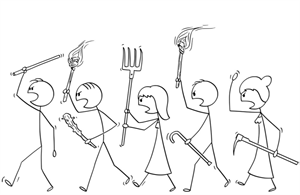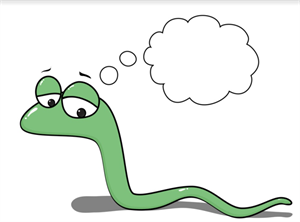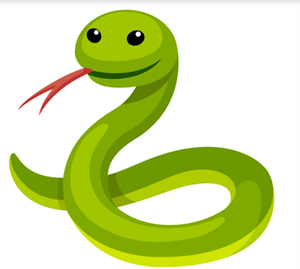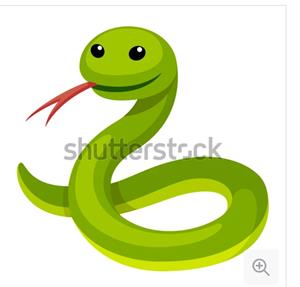
PUMPA - SMART LEARNING
எங்கள் ஆசிரியர்களுடன் 1-ஆன்-1 ஆலோசனை நேரத்தைப் பெறுங்கள். டாப்பர் ஆவதற்கு நாங்கள் பயிற்சி அளிப்போம்
Book Free DemoThe poem begins in the middle of a commotion. The poet gives the picture of a violent situation, showing signs of restlessness, anger and fear. He describes a seemingly gruesome scene where a snake is trying to escape the clutches of his attackers. Snakes, in general are considered to be a threat to human beings. Humans prioritize survival over any other thing and therefore are always on their watch. They might not want to take the slightest chance by risking their own lives. Although a complete picture of the scenario is not given, as to how the humans' encounter with the snake went about, the poem starts with the picture of a snake trying to escape for its life. The beginning of the poem thus sets the mood to the entire theme of the poem.
The snake is trying to escape the pursuing sticks, indicating that he is being chased by a lot of people with sticks in their hands, with the sole purpose of hitting him. This line in the poem is of a high significance as it points out the power play between the humans and the reptiles. Contrary to the general belief that snakes are harmful and can kill humans, non-venomous snakes are less dangerous. But there is a lack of awareness among human beings and an unnecessary fear about snakes. In this case, the snake is being chased and it tries to slip away. If snakes were indeed dangerous, then it could have turned back on them and passed its venom on them. But the fact that it is crawling away for its dear life shows that it is an innocent being who had not entered into their lives on purpose. Generally, wild animals and snakes do not attack anyone unless they feel intimidated by them.

Angry people with sticks
The poet describes the snake's attempt to escape in detail. The snake does not crawl in a linear position. He moves in curves as it is difficult to track something that goes in curves, compared to that which goes in a straight line. In the next line, the readers get a picture of the type of snake that he is. It is not a large python or cobra, but rather a snake that has a very thin and long body. Most of these thread snakes are harmless to humans. The poet differs in his stance from the rest of the group, as he does not look at the dangerous aspect but chooses to look at the beauty of the snake. He adores the shape of the creature, as it gracefully moves its slender body across the floor. He tries to look at the beauty in all of God's creation. Each of the creatures in the world have a separate purpose and reason for their existence. It is important to find the beauty in these little things. Although it is important to safeguard oneself from danger, man does not have the authority to destroy another fellow creature, that does not cause any harm to him. Snakes are a part of nature and thus form a part of the eco system. But when humans take control and invade into their space, it might sometimes lead to trouble. The poet emphasizes on the fact that humans need to let other creatures to live in peace as long as they do not attack them. Attacking and invading into their space only for the sake of exerting one's dominance is not encouraged by the poet.

Green snake trying to escape
The snake is near a water body and this contains enough evidence that it is not the snake who has intruded into the human space, rather it was the humans. He glides his graceful body through the water, probably a river, swamp or a lake, as he mentions that that it has reeds. Reeds are types of long grasses that grow near water areas. The snake moves away from the strokes of the water, to avoid getting caught in the swift force of the moving water. The snake is cautious and a fighter that he tries to escape all the hurdles thrown at him. The snake is driven away from his own habitat by the humans. The poet expresses and nearly requests the attackers to let go of the snake. He appeals " O let him go" in a desperate attempt to educate them that if they let it go, it will escape and not cause any harm to them. He wants the snake to take solace among the reeds of the water and hide from his attackers. He does not want the snake to get hurt and hopes that the reeds, which is another part of nature, gives shelter to the snake, who is being chased away from his habitat.

Reeds near water
The poet says that the snake is tiny and green. A rough green snake is a non-venomous snake with a thin long slender body, which most people even use as pets. This line confirms the fact that the snake that is being chased by the attackers is not dangerous. The people may chase it due to lack of awareness, or for the sheer joy of enjoying it as a sport. Some people enjoy hurting submissive people and animals to exert their dominance over them. But the poet clearly does not want the snake to be caught. He says that the snake is so harmless that it cannot even cause harm to children. Snakes mostly target smaller animals that can be swallowed as food, like rabbits, mice, and therefore children can be an easy target. Also children are less aware of dangerous reptiles and are easily prone to be attacked. But neither of this, is the case with the green snake, as it is not even harmful to children.

Slender green snake
The poet recollects that the snake had been lying there in the sand, all by himself not bothering about anything, until he was observed by the humans. As soon as the humans saw him, they felt threatened just by his mere presence and he was chased away. They pursued him through the water, until he vanished in the green reeds creating just ripples in the water. The ripples in the water is temporary indicating that his presence had become a mere memory, an oblivion.

Ripples in water